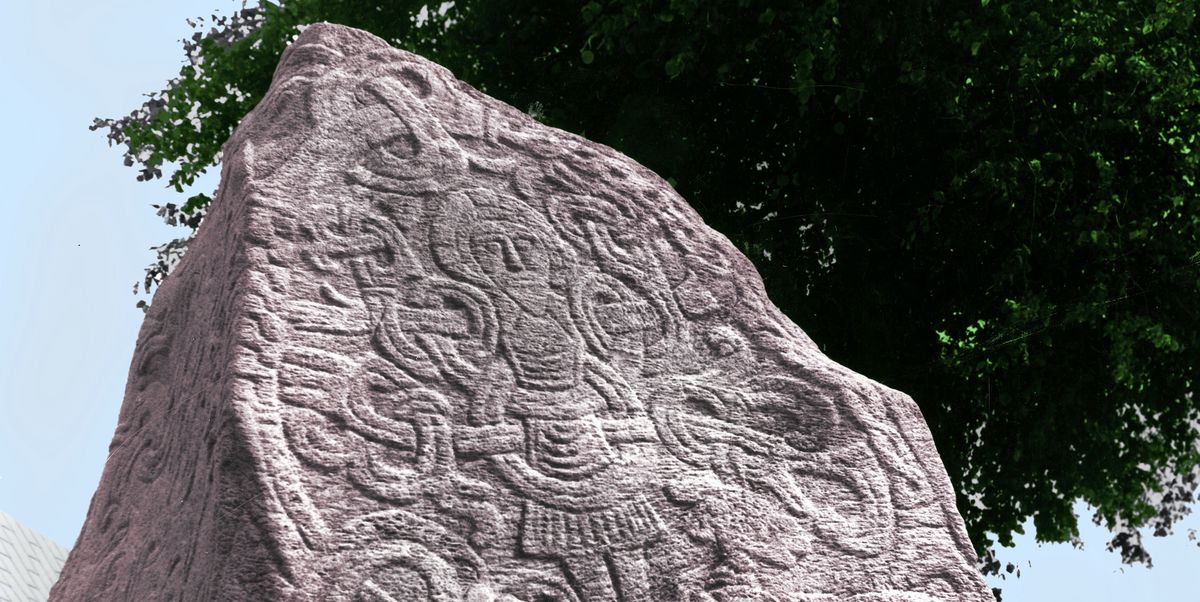By Michael Natale
Here’s what you’ll learn when you read this story:Archaeologists associated with the Moesgaard Museum in Denmark uncovered the untouched burial site of a powerful chieftain from the Viking Age.Thirty burial plots, likely containing the remains of the chieftain, his family, and their servants, contained an array of artifacts that indicate their high-ranking role in Danish society, during a period ruled over by King Harald Bluetooth.Bluetooth’s reign was a pivotal time for Denmark, which saw the introduction of Christianity into Danish society, as well as the erection of the famous Jelling stones.This story is a collaboration with Biography.com.Archaeologists in Denmark recently uncovered 30 Viking graves—a remarkable find on its own. The bigger surprise? The graves were virtually untouched and contained artifacts that suggested the people buried there were from a powerful local family, including a chieftain who served under the legendary King Harald Bluetooth. In an article published in Live Science about the find, excavation leader Liv Stidsing Reher-Langberg is frank: “We simply had no expectations of finding graves.” The article notes that not only are burials from the Viking Age of 793 A.D. to 1066 A.D. rarely found, but when they are, they tend to be sparse and bereft of any “grave goods” that could be indicative of who was buried there. In a translated press release, the Moesgaard Museum says that the excavation team uncovered “grave goods such as pearls, coins, ceramics, an unusual box with pearls, gold thread, a pair of scissors, and the remains of the deceased in the form of teeth and bones.”One particular burial of note was a woman’s casket that sported, per Reher-Langberg, “…the finest fittings, rivets, and an advanced locking mechanism.” That casket, when examined with X-ray imaging, was revealed to contain “ornate” personal items such as “jewelry, a needle and an elegant pair of scissors.”Based on the artifacts found—and the graves’ proximity to a previously identified chieftain’s farm—the team determined that the site likely contains the remains of the chieftain and his household. The range in grave size and relative opulence of the plots suggests the people buried there may have included everyone from close family members to enslaved servants.“The chieftain in Lisbjerg had enormous power — economically, politically, religiously and socially,” Reher-Langberg notes in the Live Science report. Given the burials likely date to the late 900s, there’s a strong chance the patriarch of the family worked for Harald Bluetooth, who was quite accomplished during his kingship.The king of Denmark reigned from roughly 958 A.D. to 986 A.D., and also served briefly as king of Norway. During his rule, Bluetooth united the tribes of Denmark into a single entity and introduced Christianity into Danish society. He also oversaw the erection of the second (and larger) of the two famed Jelling stones which, through runic carvings, tell the story of Denmark’s origins, as well as the nation’s adoption of paganism and later Christianity. The name “Bluetooth” for the now-ubiquitous wireless technology comes directly from this stone. In his telling, Jim Kardach, who developed the tech in 1997, was reading up on Viking history, and came across the runic writing on the Jelling stone that depicted Bluetooth as a uniter of all Denmark. Kardach thought the name was a perfect fit for the technology he was developing—something designed to unite different devices, much like King Bluetooth had united warring factions. Of course, Kardach probably wasn’t aiming to help wireless headphones and speakers band together to conquer Norway. The fact that this powerful figure likely lived during a pivotal moment in Danish history makes the discovery especially significant. The burial practices demonstrated at the site and the plethora of artifacts could offer key insight into a period of history that saw the development of Denmark as a whole.Researchers are reportedly conducting further analysis of the wood, soil, and human remains at the site, and the artifacts they foun will be displayed at the Moesgaard Museum.
